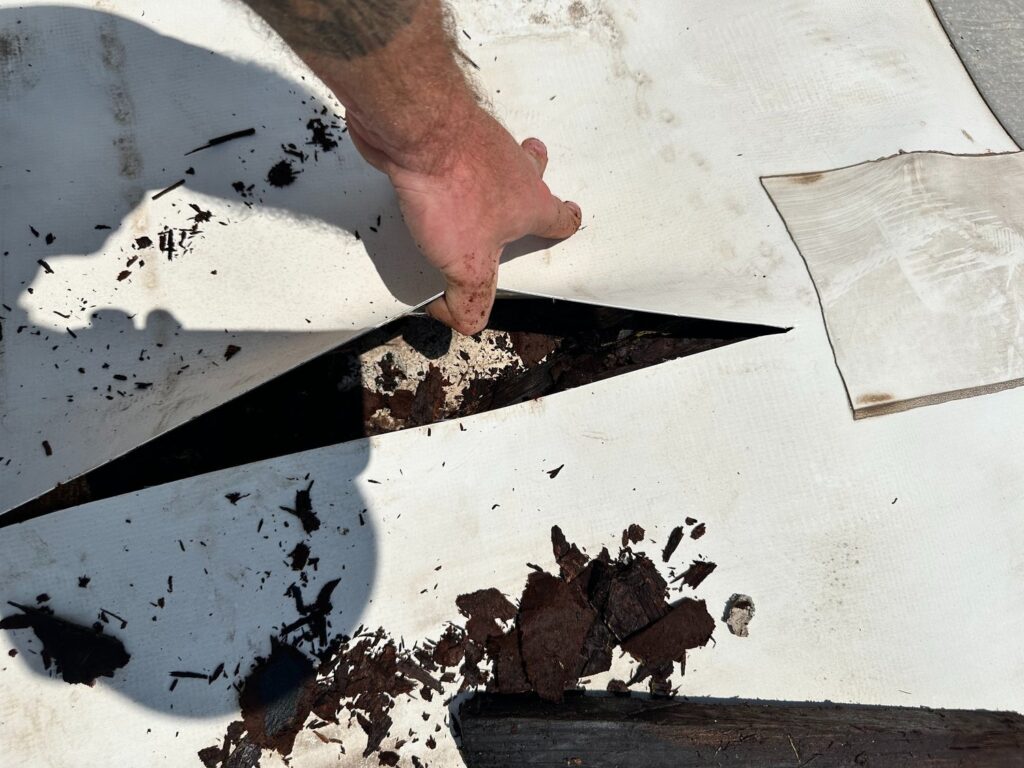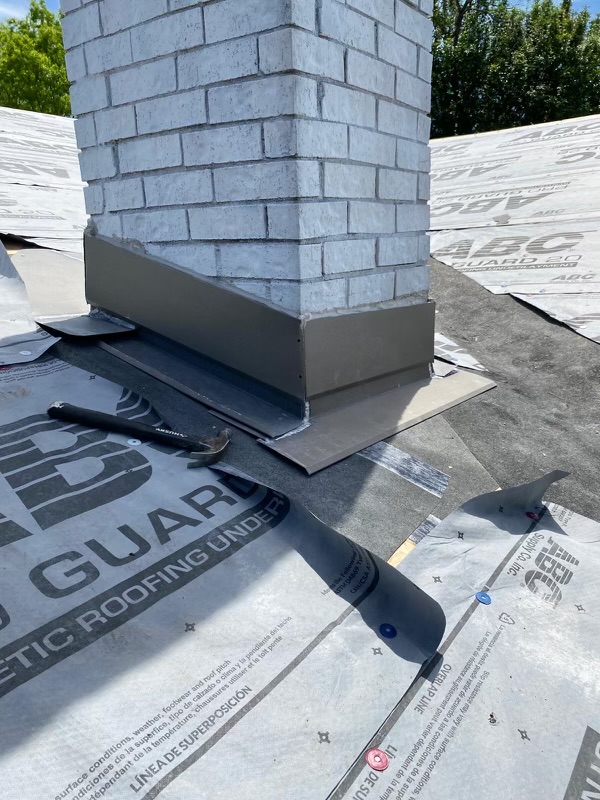How to Prevent Roof Leaks in Austin’s Humid Climate: 6 Pro Tips
Written By Cody Profitt
A leaking roof can quickly turn from a small nuisance into a major headache—causing water damage, mold growth, and expensive repairs. The good news? Most roof leaks are preventable. At Comanche Roofing, we believe in educating Austin homeowners on how to keep their roofs leak-free and their homes protected year-round.
Here’s how to prevent roof leaks with some essential, expert-backed tips.
1. Schedule Regular Roof Inspections
Prevention starts with routine inspections—at least once a year and after major storms. A professional roofer can spot early signs of damage like:
- Cracked, curling, or missing shingles
- Rusted or loose flashing
- Soft spots or sagging areas
- Debris buildup in gutters or roof valleys
Pro Tip: we offer free roof inspections in Austin, TX—so there’s no excuse to skip this vital step.

2. Keep Your Gutters Clean and Functional
Clogged gutters are a major cause of roof leaks. When water can’t drain properly, it backs up under shingles and seeps into your roof deck.
Prevent this by:
- Cleaning gutters at least twice a year (spring and fall)
- Installing gutter guards to reduce debris buildup
- Checking downspouts to ensure water flows away from your foundation
3. Trim Overhanging Trees
Branches that hang too close to your roof can:
- Scratch or damage shingles in the wind
- Drop leaves and twigs that clog gutters
- Attract pests like squirrels or rodents
Keep branches trimmed at least 6 feet away from your roofline to minimize risks.
4. Watch for Signs of Roof Aging
Even the best-installed roofs wear down over time. If your roof is over 15-20 years old, it’s more prone to leaks—especially in our hot, storm-prone Austin climate.
Signs your roof may need attention:
- Shingle granules in gutters
- Frequent leaks or interior water stains
- Moss or algae growth
- Rising energy bills due to poor insulation
5. Maintain Flashing and Seals
Flashing protects the most vulnerable parts of your roof—like around chimneys, skylights, and vents. If it rusts or shifts, water can sneak in.
Ask your roofer to inspect flashing during each visit and re-seal or replace it if necessary.

6. Don’t Ignore Small Issues
One of the biggest mistakes homeowners make? Waiting too long to fix small problems. A tiny drip today can mean a major repair tomorrow.
If you notice:
- A water stain on the ceiling
- A musty smell in the attic
- Shingles in the yard after a storm
…call a roofing professional immediately.
How to Make a Roof Leak-Proof?
While no roof is 100% immune to damage, there are proactive steps you can take to make your roof has leak-proof as possible:
Invest in High-Quality Roofing Materials
Choose shingles and underlayment designed for durability and weather resistance, especially in Texas’s hot and stormy climate.
Use a Waterproof Membrane
A waterproof barrier under your shingles provides an extra layer of protection, especially in vulnerable areas like roof valleys and edges.
Upgrade Flashing and Seals
Premium flashing materials like metal (as opposed to plastic or rubber) last longer and resist rust. Combine that with high-quality sealants for long-term leak resistance.
Ensure Proper Roof Ventilation
Good ventilation prevents moisture buildup in your attic, which can cause mold and weaken your roofing structure.
Hire a Trusted Local Roofer
Proper installation is key to a leak-free roof. A reputable local company like Comanche Roofing ensures your roof is installed and maintained to the highest standards.
Where to Look for Leaks
In the Attic
Grab a flashlight and check your attic. You’re looking for wet spots, mold, or damaged wood sheathing. Even dark stains on beams or insulation can point to a leak.
Exterior Roof Surfaces
Do a visual check from the ground. Are there any visible cracks, curled shingles, or clogged gutters? Is flashing around vents or chimneys lifted or rusted? All of these can lead to roof leaks.
Around Roof Penetrations
Leaks often develop around chimneys, skylights, roof vents, or satellite mounts. These areas need to be sealed properly, or they can let water in when it rains.
How much does it cost to repair a leaking roof?
The cost to repair a leaking roof can range quite a bit depending on how severe the leak is and where it’s located. Here’s a breakdown tailored for Texas homeowners, especially in areas like Austin where hail, wind, and heavy rain are common.
Small Leak (Minor Shingle Damage or Flashing Issues):
$150 – $500
(Quick fixes like resealing flashing, replacing a few shingles, or patching a small area)
Moderate Leak (Leak with Water Damage or Mold Risk):
$500 – $1,500
(Includes repair of underlying decking, replacement of damaged shingles, and moisture barrier restoration)
Severe Leak (Structural Damage, Multiple Leak Points):
$1,500 – $4,000+
(May include rot repair, extensive water damage remediation, and full sections of roof replacement)
Don’t Wait Until It Leaks — Protect Your Roof Today
If you’ve noticed signs of a leak or your roof was damaged during recent storms, let us take a look before it gets worse. Comanche Roofing is here to help you protect your home — starting with a free, no-obligation roof inspection.
Call us today or request an inspection online. Let’s fix that leak before it becomes a disaster.
Get your free quote now!
Quick Links
© 2025 Comanche Roofing. All Rights Reserved.

